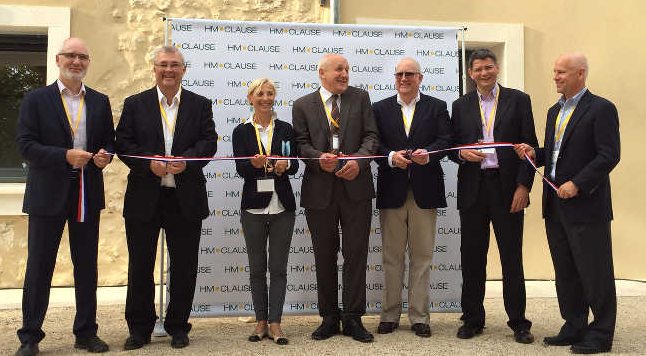Today, Sept. 14, leaders from HM.CLAUSE, Groupe Limagrain and the local government gathered at the Saint-Rémy-de-Provence research center in France to celebrate 50 years of seed research and plant breeding. As part of its celebration, leaders unveiled a completely renovated and expanded Mas Saint Pierre.
During the past eight years, HM.CLAUSE has invested more than 8.3 million euros on the site. “This is a symbol of our commitment of both preserving our research history and investing in the future,” said Mark Stowers, who gave the opening remarks to the press, company employees and local leaders.
Known for its ideal Mediterranean climate with more than 160 days of sunshine and rich soil, Saint Rémy sits about half way between the Equator and the North Pole. The site focuses on developing tomato, pepper, melon and zucchini to better meet the needs of both consumers and farmers.
As HM.CLAUSE vice president and global head of research and development, Stowers spotlighted the diversity of the company’s melon breeding program, noting that the Charentais melon in France, the Yellow Canary in Italy, the Piel del Sapo in Spain and the Western Shipper cantaloupe in the United States are all products of its program.
The Saint Rémy research center was created after acquiring a fruit operation in 1965 and clearing the trees. Today, more than 60 employees work on site, as well as about 30 seasonal workers. The Saint Rémy research center features about 9,000 square feet of office space and more than 3,000 square feet of laboratory space. Additionally it has more than 150,000 square feet under glass greenhouses for setting lines and guided crosses and conducting pathology tests. There is another approximatley 80,000 square feet of plastic, multi-span greenhouses for breeding lines and the creation of experimental hybrids, and more than 180,000 square feet of plastic tunnels for the production of experimental lines, screening lines and experimental hybrids. Furthermore, about 12.5 acres are used for open field crops.
Local leaders were also present to celebrate the company’s investment and its dedication to preserving the history of the site during the upgrades and expansion.
These included Herve Chérubini, mayor of Saint Rémy, and Marie Pierre Callet, vice president of Conseil Departmental.
In the past 50 years, agriculture has gone through a real revolution, described Pierre Callet, noting that the number of farmers has drastically decreased. But farming is still strong, she said, adding that it is more efficient in its operations today than in years past.
“Since 1965, Limagrain has made sure to strengthen the heritage of seed for local farmers,” she said. “I know farmers in our country share in their concern and love for the soil. We wish much success to the company and the need for France to be strong.”










